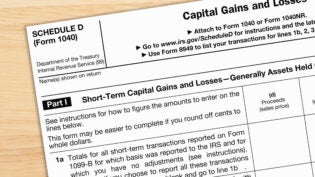Home > Finance > Tax and Accounting >
What Are Some Commonly Overlooked Tax Deductions?
By: Bill Wortman

Everyone knows that there are many deductions you can claim for your business. Many people, however, fail to claim all the deductions they could, or else don’t take the steps that would allow them to claim the deductions. Avoid these mistakes, and you’ll save your business a lot of money. Here are 11 of the most commonly overlooked tax deductions.
- Keeping a mileage log. Almost every small business entrepreneur has business use of an automobile, which is deductible. But the biggest obstacle to claiming this deduction is a failure to keep adequate mileage records. The automobile’s cost is deductible based on the percentage of business use, either by determining the percentage of the actual amount spent on business or else using the standard mileage allowance. If you don’t keep a log with all of your business trips, comparing the total business miles to the total miles driven for the year, your deduction can be disallowed.
- Keeping cash receipts. A lot of large business expenses are documented through canceled checks and credit card statements. But you also probably spend a lot of money on your business in cash, usually a large number of small payments, like business lunches, that can add up to a large total in the hundreds or even thousands of dollars. If you just get rid of the receipts for purchases made in cash, the deduction is forgotten and lost. A good way to solve this problem is to submit expense reports for reimbursement from the business checking account when you make a cash payment; you then file the receipt with the report to support the reimbursement, and it’s available for you to count as a deduction come tax season.
- Documenting non-cash charitable contributions. Everyone knows that money contributed to charities is deductible, but many people don’t realize that non-cash charitable contributions are also deductible. Mileage is deductible, as is the “thrift shop value” of goods that you donate. To take advantage of these deductions, keep detailed records of the items you give—and use realistic values. Get receipts from the charity. If your non-cash contributions are more than $500, you’ll need to report them on a separate form, Form 8283. Get an appraisal for particularly large contributions to support your claim.
- Considering home equity debt to pay off consumer debt. Your consumer debt, including car loans, credit cards, and unsecured credit lines, is not deductible, but interest on a home equity line is deductible, up to $100,000. Exposing your home to extra debt can be risky, but there is a benefit in using interest payments as tax deductions, and payments and interest rates on home equity loans are often relatively low. Weigh the risks carefully, but this is another potential deduction.
- Identifying all medical expenditures. You can deduct medical expenses beyond just payments to doctors or health care facilities. You can also deduct things like massage therapy or other services necessitated by a medical condition, special equipment you need for therapy, or capital expenditures so far as their cost exceeds the increase in property value. Make sure you have written advice from a doctor supporting each expenditure.
- Considering employing your children. If you employ your children, you can get a business tax deduction. The children can protect their own income by using the standard deduction, and there is no Social Security or Medicare tax if the child is under 18 and the employment is with a Schedule C business. Document the duties your children perform, and their compensation should be reasonable for the responsibilities.
- Tracking investment expenses. You can deduct any expenses you incur while maintaining your investments, under the miscellaneous itemized deductions. This can include not just advisory fees or other direct fees, but also magazines, newspapers, or interest services you use to maintain your portfolio.
- Maintaining a separate room for business activities. You can deduct business use of your home, but only if you have a separate area specifically designated for the business. Identify an appropriate space, isolate it from the personal residence, and then you can compare the square footage of that area to the total to get your deduction.
- Tracking additions to basis. The basis in any investment can change over time. For example, the basis in mutual funds increases as dividends or capital gains are added back in; basis in partnerships or S Corporation stocks changes with taxable income or distributions; and basis in your home changes with capital improvements or casualty losses. Track any changes to basis so you can claim your full basis when you eventually sell the property.
- Claiming “hung-up” passive losses. Your passive losses are limited to the amount of your passive gains in most cases. Many taxpayers build up a large amount of passive loss carry-forward because of these limits on passive losses. When an investment is sold, any losses from that investment that are still pending are allowed in full, so don’t forget to include all the losses you’ve carried forward.
- Considering contributions of appreciated assets. When making charitable contributions, consider using appreciated assets, like an investment stock with large unrealized gains. When you donate appreciated property, you don’t have to report any capital gain but you can deduct the entire value.
Published: December 18, 2012
3816 Views
3816 Views











